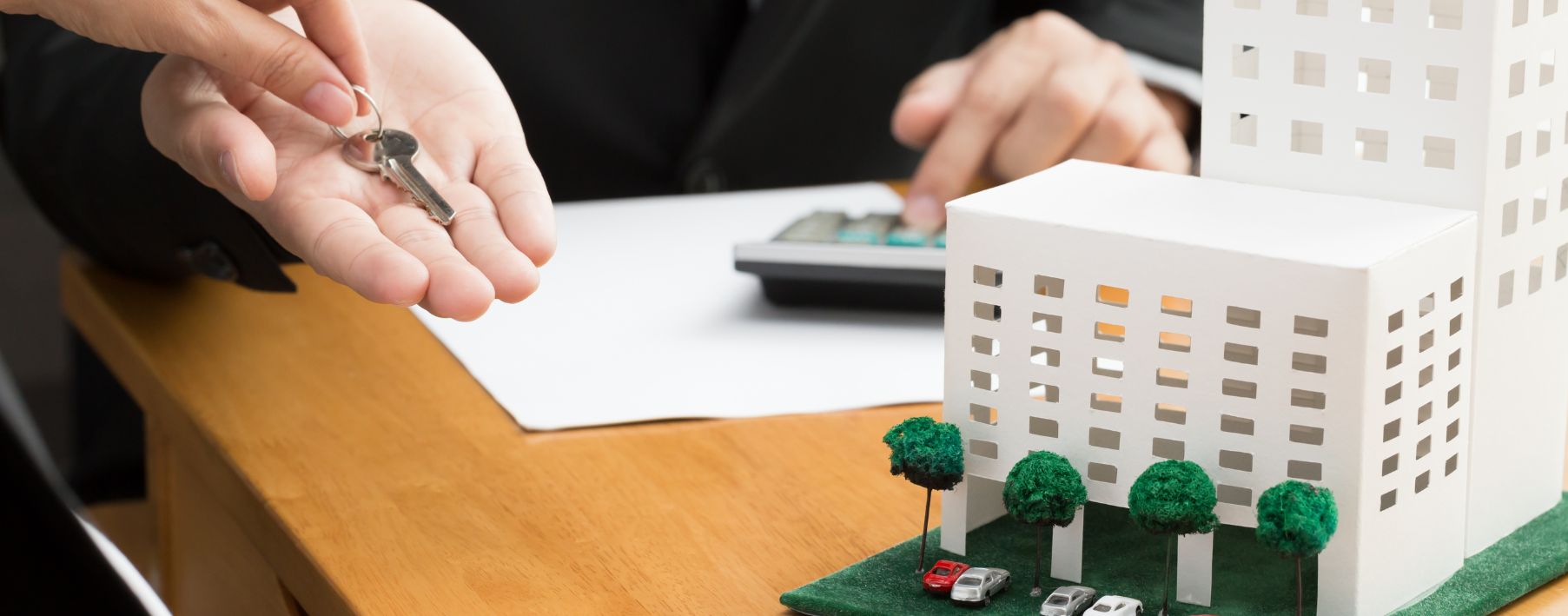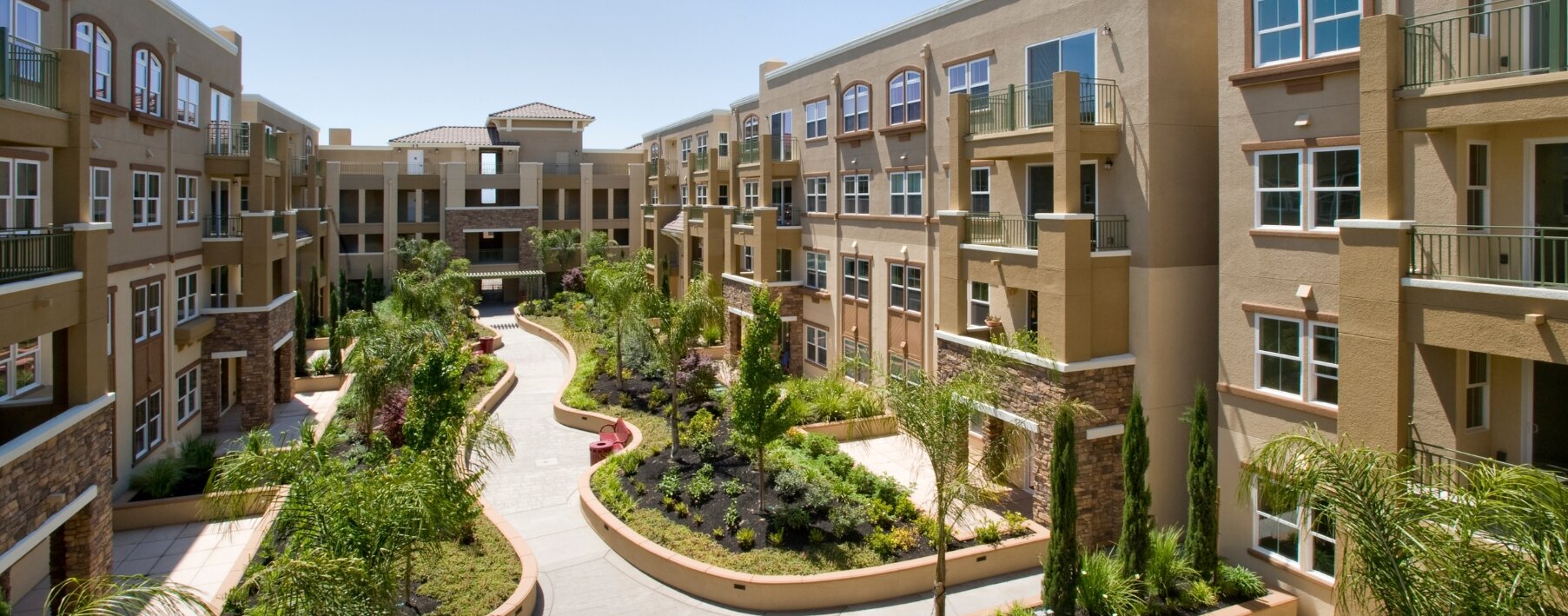What is an HO-6 homeowners insurance policy?

An HO-6 insurance policy, commonly referred to as “condo insurance,” is a type of homeowners coverage specifically created for condominium and co-op owners. HO-6 insurance policies protect the interior of your condo and personal belongings while offering you personal liability coverage.
When used in conjunction with your building owner’s collective insurance plan, you can rest easy knowing you are protected. Before purchasing condo insurance, it’s important to check what your homeowners association or building owner will cover; that way, you don’t purchase the coverage you don’t need, make a claim that’s ineligible, or leave yourself open to loss by buying inadequate coverage.
Key takeaways
-
Condo insurance, also known as an HO-6 policy, is often required by mortgage lenders and building owners alike.
-
These policies offer limited coverage for property damage, but provide coverage for personal belongings and liability.
-
HO-6 policies are purchased in addition to the building association’s master policy, filling in coverage gaps and providing individual condo owners with personal protection.
Is condo insurance required?
HO-6 insurance is typically required by both the condo building association and the bank that holds your mortgage loan. This policy provides financial and legal protection from various covered perils and losses, including personal liability from injuries sustained on your property.
While you likely won’t need coverage for shared areas of the building or structures owned by your complex — such as a lobby, pool, or clubhouse — you will be responsible for any necessary repairs and replacements inside your condo and any loss of items inside. Because of this, condo insurance is a no-brainer for any owners interested in financial protection, even if you own your condo outright and aren’t required to buy coverage by your lender and/or homeowner’s association (HOA).
Condo insurance may not be necessary if you don’t live in the unit full-time. With this sort of living situation, better coverage options might include vacant home coverage for second homes or landlord insurance (DP3 policies) if you’re renting out your unit to tenants. Both policies can offer options for coverage you may need without forcing you to pay for unnecessary protection.
Condo insurance won’t be mandatory if you’re renting a condo or co-op from someone else since you don’t own the unit. Even still, you may want to look into renters insurance options (known as HO-4 policies) to protect your belongings and provide you with personal liability coverage.
What does HO-6 condo insurance cover?
Often called “walls-in” coverage, HO-6 condo insurance works by filling in the gaps that your condo association’s collective insurance policy may not cover. Since a condo’s master policy is intended to protect common spaces and the building itself against loss or property damage, it’s up to you to protect your individual units and belongings.
Here’s a look at the different types of coverage provided by a condo insurance policy.
Named peril coverage for certain building items
Condo owners aren’t generally responsible for many shared aspects of the building. However, they do need to buy coverage for certain building items in which they have an insurable interest, as well as their own unit’s structure and contents therein.
An HO-6 condo insurance policy protects covered damage to your unit’s internal structure, such as the flooring, walls, cabinets, plumbing, and installed appliances. This protection falls under the category of “broad named peril” coverage, meaning that the insurance company covers only specific perils (risks). If a loss occurs due to an unnamed peril, the claim will likely be denied.
Common named perils include:
-
Fire
-
Smoke
-
Theft
-
Burst pipes
-
Wind
-
Hail
-
Lighting
-
Explosions
-
Vandalism
If you want coverage for additional perils not listed or excluded in your policy — such as earthquakes, home water damage, or mold — you’ll likely need to purchase them separately. For example, even though fires are included in standard policies, fire insurance can protect you if you’re in an area prone to wildfires.
It may be a good idea to install smart home devices throughout your condo to provide extra protection and warnings from things like theft, fire, and gas leaks. Not only could this save you repair expenses throughout the life of your home, but carriers offer discounts for installing these devices and keeping them up to date.
Named peril coverage for personal property
Your own belongings will also be covered by your HO-6 policy, meaning that your furniture, clothing, home decor, small appliances, accessories, and more are protected. If your unit is damaged or destroyed by a covered event (named peril in your policy), your condo insurance will help you replace affected items.
Personal property coverage often follows your items outside of your home. This means that if your belongings are stolen from your vehicle, your desk at work, or even from your backpack while you’re at school, they may be covered. However, the amount of coverage may be different outside of the home, and individual high-value items such as jewelry or electronics may only be protected up to a certain dollar amount.
Personal liability protection
Most homeowners insurance policies, including HO-6 coverage, include a level of personal liability protection. This coverage is designed to financially protect you if you are responsible for property damage or injury to another person.
This coverage may also help you pay for medical expenses or lost wages that occur because of the injury. It might kick in to cover medical bills if someone slips and falls in your kitchen, breaking their leg.
Living expenses and loss of use
Many HO-6 policies include coverage for the loss of use of your residence, helping to pay for reasonable expenses like hotel or Airbnb stays and meals, after a covered loss. If your home is deemed uninhabitable due to an issue in your unit or another unit in your building, this coverage can help ease the financial burden incurred if you’re forced to move out temporarily for repairs.
Should your home become unlivable due to repairs or damage from a covered loss, your additional living expense coverage will help pay for food and lodging at a safe location until your home is habitable again.
What does condo insurance not cover?
HO-6 insurance doesn’t cover any structures or property that you don’t actually own. While standalone homeowners own their entire home and the surrounding land, condo owners only own the internal unit and their personal items inside. This means that any damage or necessary repairs to the external structure of your building (and common areas such as hallways and pools) generally are not covered by your individual insurance policy. These areas instead should be covered by the building owner’s collective policy.
There are also perils that your condo insurance policy won’t often cover. These include floods, earthquakes, hurricanes, and more. Homeowners insurance generally doesn’t cover normal wear and tear, neglect, or damage due to insects and pests, either.
To make sure your home is properly covered for anything that might occur, it’s important to double-check with your condo association to see what coverage their policy already offers. You should also consider whether you need to buy supplemental coverage for high-risk events not already included in your own policy, like earthquake insurance or hurricane coverage.
If you don’t plan to live in your condo full-time, no matter if you are leaving it empty or renting it out to others while you are away, you’ll need to update your insurance coverage to match your new living situation. Vacant home insurance can protect an empty home, while policies like DP-3 and short-term insurance offer more protection if you allow renters into your property.
HO-3 vs. HO-6 insurance
So, how does condo insurance compare to a standalone homeowners insurance policy? The main differences between HO-3 and HO-6 insurance are cost and coverage limits.
Condo insurance should be purchased in conjunction with an HOA’s or condo association’s master building policy. Since it only offers protection for internal structures and personal belongings, the cost is generally lower for each individual unit owner. Standalone homeowners insurance policies tend to include all the same coverage categories (property, personal belongings, and liability) as condo insurance, but with added external structure and property protection. For this reason, they can be more costly and provide broader coverage.
These two policy types also differ in terms of covered perils. Condo insurance is usually a named peril policy, which means that only losses caused by risks explicitly set forth in the policy are covered. Standalone homeowner policies, however, offer both named and open peril (also known as all-risk) coverage.
Condo association: what your complex will cover
When determining your individual coverage needs, be sure to take into account what your building’s policy already covers. There are several types of master insurance policies for condo owners, though some form of coverage is required for common areas and external damage. Understanding your building’s policy is key to both ensuring that you are fully protected and also not overpaying for coverage you don’t need.
These are the three primary insurance options for condo buildings:
-
Bare walls — Only external structures and common areas will be financially protected.
-
Single entity — Protection is extended to include replacing or repairing original fixtures inside each unit, as well as providing some liability coverage.
-
All-in coverage — This policy protects your external structures, common areas, fixture repairs, replacements, and even upgrades made by individual owners. It also offers personal liability protection.
To determine what sort of individual coverage you’ll need, ask your condo manager for a copy of their coverage policy.
Additional coverage options
As mentioned above, there are many additional insurance options that you can bundle into your condo policy to provide you with more in-depth and specialized coverage.
If you live in a high-risk flooding or earthquake zone, for example, you might want to add those coverages to your policy. Opting for sewer backup or mold coverage, which is typically excluded, can give you greater peace of mind. You can also add blanket jewelry coverage or special assessment coverage, each of which will extend the monetary limit your carrier offers in the event of a covered loss.
When signing up for condo insurance, consider the following add-ons to protect your investment from whatever comes your way:
-
Blanket jewelry coverage — If you have a lot of valuable jewelry, blanket jewelry insurance coverage can help provide extra protection in the event of damage or theft without requiring an itemized list or proof of value.
-
Earthquake coverage — Those who live in areas prone to earthquakes may want to consider coverage for this particular peril, as this coverage is not typically included in condo insurance policies.
-
Flood coverage — Standing and intrusive water can cause serious damage to your structure and belongings. This coverage will help you repair your home in the event of a covered flood.
-
Loss/special assessment coverage — In some circumstances, building owners may encounter damages for a loss that exceeds the collective policy’s coverage limit. If this happens, they may require individual owners to pitch in to cover the difference. Supplemental or special loss assessment coverage helps to cover those payments.
-
Umbrella coverage — Also known as umbrella insurance, this coverage offers protection after the policy limits of your primary liability is exhausted.
Condos are a great option if you want to own your home without the hassle and upkeep of a single-family house. Condos allow you to make improvements to your home's interior without worrying about landscaping, external structures, or common area maintenance. Whether you want to improve your condo coverage or buy for the first time, let Hippo help you protect your home with an HO-6 condo insurance policy.
Still have questions?
Eager to find out more about HO-6 insurance? Take a look at some of the most frequently asked questions.
Is loss assessment the same as HO6?
An HO-6 condo policy may provide loss assessment protection to property owners. This coverage kicks in if damages to a condo building or common area exceed the coverage limits of the building’s master policy. When that occurs, condo owners may be responsible for dividing up and paying the difference themselves, but if your HO-6 policy offers loss assessment protection, this personal coverage can jump in to pay it for you.
How much does an HO-6 coverage usually cost?
The average cost of an HO-6 dwelling coverage policy was $531 in 2022. However, your actual policy cost will depend on a variety of factors including, but not limited to your location and ZIP code, building age and condition, unit size, and its specific upgrades and features.
What are condominium fees?
Similar to HOA fees, condominium fees are paid monthly by condo unit owners to cover shared expenses throughout the building. Depending on the building, these fees might be used to pay for things like maintenance, pool servicing, premiums on a collective master insurance policy, garbage collection, utility costs, security, and landscaping.
What is a master policy?
A master policy is collective condominium insurance coverage purchased by an owners association. It is designed to protect the building’s structure and shared spaces and may even provide coverage for individual property owners. Premiums for this policy are typically paid through the collection of condo fees.
What is the difference between HO-6 and HO-4?
HO-6 coverage is an insurance policy for condo and co-op owners that generally provides coverage for the interior of a condo unit along with personal liability protection, while HO-4 coverage is a renter’s insurance policy and generally provides coverage for personal belongings.



